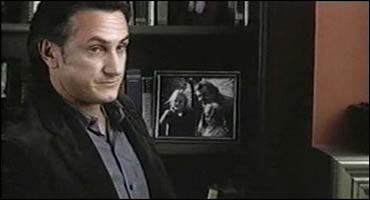
 |
It's the same basic thing. The first half of both movies presents a bit of ordinary domestic life in an unglamorous part of the country — Kansas in The Day After, Sheffield in Threads. A young couple is about to get married and wedding plans seem more important than the usual Cold War saber-rattling on the news. But then at the halfway point of the movie comes the mushroom cloud, and after that it's a postapocalyptic struggle in which the living envy the dead.
I suppose this is the big question both these movies raised for me: how can the drive to survive outweigh such horrible circumstances? I honestly don't know what I'd do if I and everyone around me were covered in burns and suffering from radiation sickness and eating dead rats to survive — the rational part of me says that of course I'd kill myself as quickly as possible, but I wonder whether the survival imperative would make me soldier on regardless. (I will admit that if I survived the initial blasts unharmed it might be interesting to observe the first few stages of the collapse of life on earth, but I imagine starvation would become a factor pretty quickly.)
Among the differences: well, Threads takes place in the UK rather than the US, so the government is much more involved in the (futile) preparations for the coming holocaust. Also, there are pixelly text screens between scenes explaining what aspect of the nuclear aftermath is being depicted. And while The Day After covered only a few months, Threads jumps all the way to the year 1997, thirteen years after the bomb dropped (May 26, 1984). Possibly the most interesting thing about this sort of movie is the way that it abruptly hops genres: when the protagonist finds out early on that she's pregnant, it looks like we've got a gritty working-class drama in which thirteen years later she'll be trying to keep her daughter from running around all night and getting drunk and dressing like a Spice Girl and stuff. Instead, thirteen years later she's got white hair and cataracts and is dying of leukemia, and her daughter is mentally handicapped radiation victim, with no education beyond being taught how to work a hoe, who at age thirteen following a rape gives birth to a stillborn child with massive birth defects due to her chromosomal damage.
But that's how life works, abruptly skipping from genre to genre. Like we all saw when the World Trade Center was attacked: one minute you're giving careful consideration to which danish to eat first, the next you're trying to decide what last words to leave on your spouse's answering machine. I remember that in sixth grade we had writearounds where kids would write a paragraph of a story and then pass it to the next kid. Once there was this girl who liked this boy but she didn't know if he liked her back and so she had her friend go find out but then there was a nuclear war. It was the last play of the big game with the home team down by six and the quarterback stepped back for a desperate pass into the end zone but then there was a nuclear war. The teacher gave up on this exercise. But hey. That's what it would've been like for us.
Some people, I have been reminded, already know what it's like. Not for the squeamish.

 |
What most struck me about 21 Grams was that a couple of times I thought the film was simultaneously pulling another, more interesting gimmick, only to be disappointed. For instance, in early scenes (which take place at the end of the timeline) Sean Penn's character spends a lot of time in the company of Naomi Watts's character, so I took him to be her husband; however, he also seems to have a different wife, and has recovered from some sort of life-threatening illness. I thought these bits must take place years apart or something. Then, midway through the picture is a scene in which the Sean Penn character receives the heart of Watts's character's husband, and I thought, holy crow, I get it — they have the same heart, so Sean Penn plays both guys. Cool. Except that's not the case: I'd just mixed him up with the actor who actually did play the husband. Doh.
Also, for a while there it looked like these were multiple timelines scrambled together: one where the Benicio del Toro character went straight and one where he didn't, one where Penn's character had an American wife and one where he had a British one... but this wasn't the case either. It was just plain old out-of-order storytelling. Oh well, more ideas for me!

From cnn.com: Study: Dog DNA shows influence of man. Holy crap, Rick Santorum was right!
